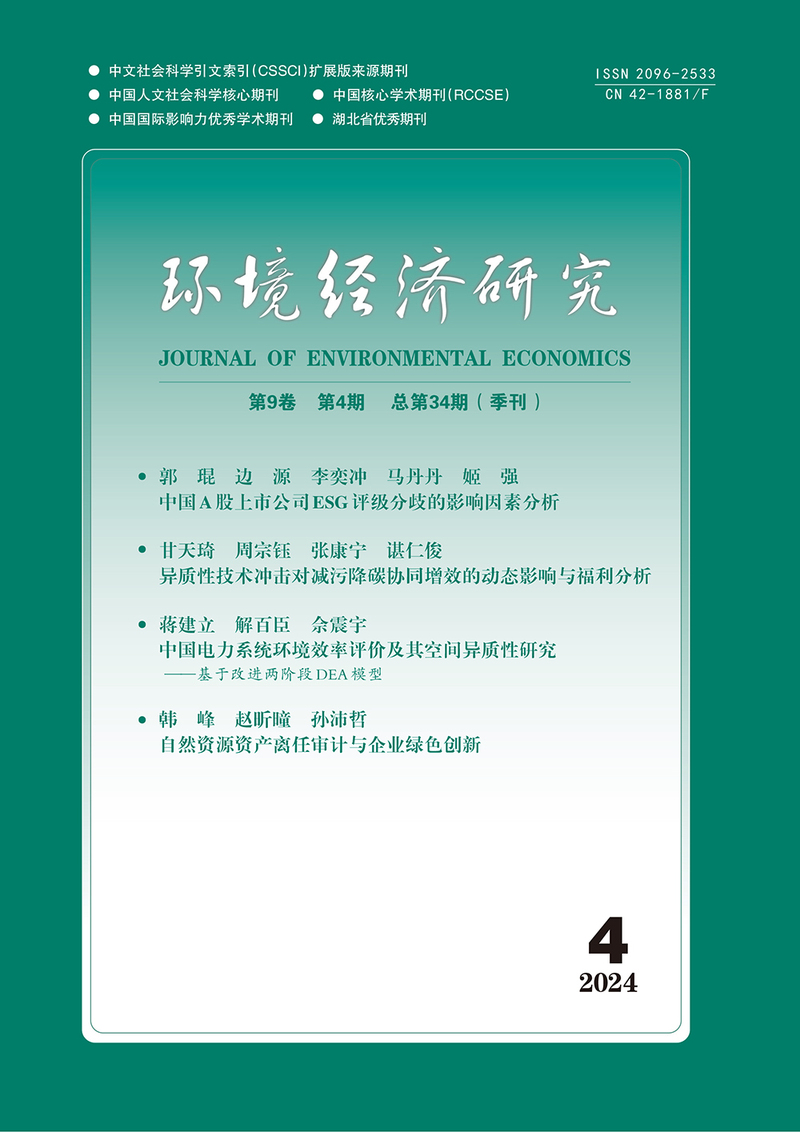Source Decomposition Analysis of Carbon Footprint in China's Industry Supply Chain:Based on IO-LCA Model
Tian Chengshi and Zhang Shiya
摘要:行业供应链碳排放的测度与评估对我国制定科学有效的碳减排政策至关重要。为此,本文建立了基于投入产出的生命周期评价模型,利用二项展开式法将我国行业供应链的碳足迹来源分解为六个层次,计算各层次的碳排放量并阐述其实际含义,进而对各层各行业的碳排放占比和行业的碳排放总量作出详细分析,找出碳排放量最大的层级。研究显示,绝大多数的碳足迹产生于电力、热力的生产和供应以及石油、炼焦产品和核燃料加工;行业之间供应链的生产和消费产生的间接碳排放量明显高于其直接碳排放量,且第六层间接碳排放量最大;生活消费的碳排放量位居行业第十,其碳排放量在前五层不明显,在第六层最大,这与城乡居民生活消费水平提高密切相关。对此,本文提出优化能源结构,把工业生产中产生的能量进行多次利用,研发节能建筑及汽车,大力发展低碳行业等政策建议。
关键词:碳足迹;碳排放;行业供应链;生命周期评价;分层分析
Abstract: It is crucial to measure and assess carbon emission of industry supply chain for making scientific and effective carbon emission reduction policy in China. this paper establishes an IO-LCA model based on the life cycle assessment method for carbon emissions from supply chains in various industries in China, and decomposes the carbon footprint of the industry supply chain into six levels and calculates the carbon emissions at each level. Then a detailed analysis was made of the carbon emissions in the various industries, the top industry in total carbon emissions, and the share of total emissions in all levels of emissions. Research shows that the vast majority of carbon footprints are generated by the production and supply of electricity and heat, and petroleum, coke products, and nuclear fuel processing. The indirect carbon emissions generated by production and consumption in the supply chain of the industry are significantly higher than the direct carbon emissions produced by the industry, and the sixth floor has the largest indirect carbon emissions. The carbon emission of living consumption ranks the tenth in the industry. Its carbon emission is not obvious in the first five floors, and is the largest in the sixth floor. It is closely related to the improvement of living consumption of urban and rural residents. In this regard, this paper proposes to optimize the energy structure, use the energy generated in industrial production for multiple uses, research and develop energy-efficient buildings and automobiles, and vigorously develop low-carbon industries and other policy recommendations.
Keywords: Carbon Footprint; Carbon Emissions; Industry Supply Chain; Life Cycle Assessment; Layer Analysis
基金资助:本文系国家社会科学基金重大课题 “基于增加值率的中国经济增长质量研究”(14ZDB130)的阶段性成果。
DOI:10.19511/j.cnki.jee.2019.02.005
